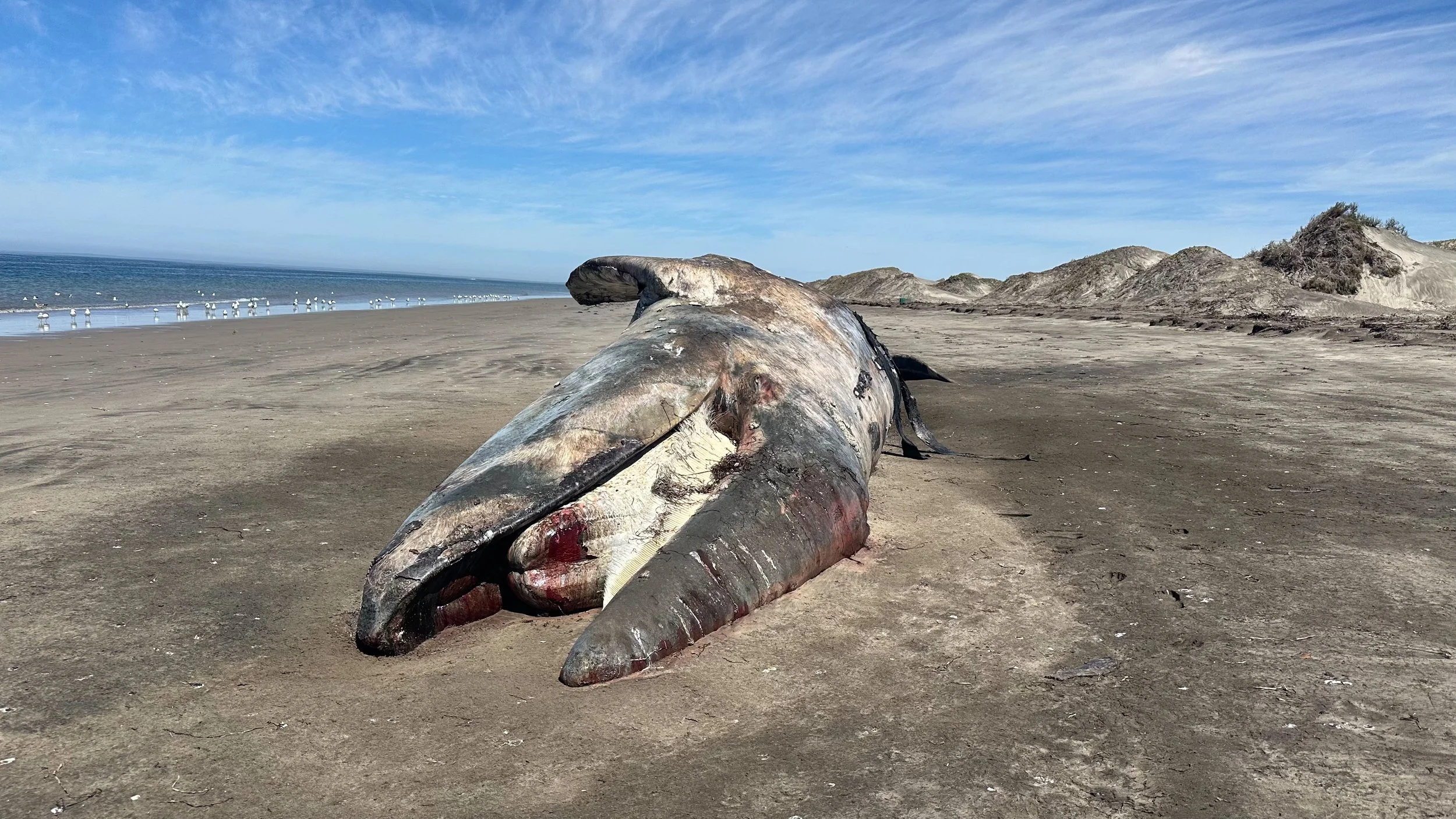2025: THE WORST YEAR YET FOR GRAY WHALES IN MEXICO
Gray whale found dead in a Pacific lagoon: documented by our team in Baja California Sur, February 2025
According to recent reports, at least 140 gray whales were found dead across the Pacific migratory corridor this last winter season — making 2025 one of the most devastating years on record for this iconic species. Even more alarming: very few calves were observed in the breeding lagoons of Baja California Sur.
The Eastern North Pacific gray whale (Eschrichtius robustus) travels thousands of kilometers each year from the Arctic to the warm waters of Baja California to breed and give birth. But this year, researchers observed an unusual lack of newborns and many adult whales in visibly poor condition.
The causes remain complex and interconnected:
Gray whale spy hop Pacific lagoon: documented by our team in Baja California Sur, February 2025
• Melting ice and food shortages in the Arctic
• Rising ocean temperatures
• Chronic stress from vessel traffic and underwater noise
• Potential exposure to contaminants
Gray whale found dead in a Pacific lagoon: documented by our team in Baja California Sur, February 2025
Continued low calf count indicates that reproduction remains depressed.
Only about 85 gray whale calves migrated past Central California on their way to feeding grounds in the Arctic earlier this year. That’s the lowest number since records began in 1994. Low calf numbers since 2019 indicate that reproduction has remained too low for the population to rebound.
Calf a Pacific lagoon: documented by our team in Baja California Sur, February 2025
These strandings are not isolated events — they are part of a larger pattern scientists now refer to as an Unusual Mortality Event (UME), which has been ongoing since 2019 and has claimed the lives of over 700 whales across North America.
Advancing Regenerative tourism and citizen science for cetacean conservation in Baja California Sur
At Nakawe Project and Baja Adventures our sister regenerative tourism project, we are committed to redefining marine ecotourism through science-driven, regenerative practices that directly benefit the wildlife and communities of Baja California Sur and the world
Our Approach: Science, community, and conservation
As scientists affiliated with CICESE, we are leading a pioneering cetacean distribution project within Loreto National Park and its surrounding waters. This initiative aims to:
Map crucial cetacean habitats: By gathering data on the presence, movements, and behaviors of whales and dolphins, we identify vital areas that require protection.
Address regional threats: One of our primary focuses is mitigating the impact of cruise ship traffic and other human activities in the Gulf of California, which pose significant risks to cetacean populations.
Inform policy and management: Our research supports the development of new regulations and management plans, ensuring that conservation strategies are rooted in the latest scientific evidence.
Regenerative Tourism: Every visitor makes a difference
Our expeditions are more than just wildlife encounters—they are immersive, conservation-oriented experiences designed to:
Engage visitors in citizen science: Guests have the opportunity to participate in data collection, contributing to ongoing research and conservation efforts.
Promote respectful wildlife observation: We follow strict guidelines to minimize disturbance and prioritize the well-being of marine mammals.
Empower local communities: By collaborating with local residents and marine biologists, we foster sustainable livelihoods and stewardship of the region’s unique biodiversity.
Gray whale spy hop on a Pacific lagoon: documented by our team in Baja California Sur, February 2025
We cannot ignore these signals. The whales are telling us something is wrong.
Will we listen before it’s too late?






